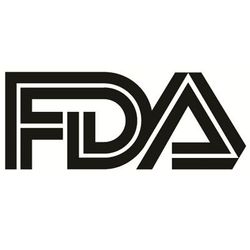
OR WAIT null SECS
FDA Committee Casts Negative Vote on Sotagliflozin in Type 1 Diabetes
The 11 to 3 vote against the benefit-risk profile of sotagliflozin comes with less than 2 months to go until the December 20, 2024 PDUFA date.
An advisory committee of the US Food and Drug Administration (FDA) has voted against the safety-benefit profile of sotagliflozin (Zynquista), voting 11 to 3 that the benefits of the agent do not outweigh the risks among adult patients with type 1 diabetes and chronic kidney disease (CKD).
Although the votes, which were cast by the FDA’s Endocrinologic and Metabolic Drugs Advisory Committee, are not binding, the move casts doubt over the future of the agent as it nears the FDA’s assigned a Prescription Drug User Fee Act target action date of December 20, 2024 for its regulatory application.
“Insulin is essential to managing this disease, but it is not sufficient in keeping patients within appropriate blood glucose ranges,” said Steve Edelman, MD, a professor of medicine in the Division of Endocrinology, Diabetes & Metabolism at the University of California, San Diego and founder and director of Taking Control Of Your Diabetes. “Only 20 percent of people with [type 1 diabetes] currently achieve adequate glycemic control with insulin alone. [Sotagliflozin], if approved, would be the first oral medication for people with [type 1 diabetes], with potential to impact renal and cardiovascular outcomes, especially in those with CKD who face even greater disease progression risks."
The tale of sotagliflozin’s relationship with healthcare providers and regulators is fraught with twists and turns. This venture marks the second time Lexicon has sought approval from the US FDA for sotagliflozin among patients with type 1 diabetes.
In 2019, Lexicon and then-partner Sanofi submitted a New Drug Application (NDA) for an indication among patient populations with type 1 diabetes, but received a Complete Response Letter. Of note, sotagliflozin received approval for this indication in the European Union but was never marketed following approval.
According to the FDA, the agency considers the resubmission a complete response to its 2019 letter regarding sotagliflozin for type 1 diabetes. Between 2019 and their August 2024 resubmission for type 1 diabetes and CKD, sotagliflozin received FDA approval for heart failure in 2023 based on the SOLOIST and SCORED trials.
"I believe there is a lot of hope for the future. There is an increased risk of [diabetic ketoacidosis] with us and unfortunately many people do not have ketone test strips readily on hand to check ketones,” said Diana Isaacs, PharmD, an endocrine clinical pharmacist, director of Education and Training in Diabetes Technology, and codirector of Endocrine Disorders in Pregnancy at the Cleveland Clinic, in an interview with HCPLive. “With continuous ketone monitoring in combination with CGM coming soon, I am hopeful that this can be one of the strategies to mitigate this risk and lead to a future FDA approval of this important adjunct therapy to lower A1C and also provide cardiovascular renal benefits.”
In their release, Lexicon Pharmaceuticals pointed out multiple committee member expressed support for sotagliflozin in alternative subpopulations of people with type 1 diabetes and CKD. Earlier in October 2024, Lexicon announced Viatris Inc. obtained an exclusive license to commercialize sotagliflozin outside of the United States and Europe in all indications.
“We are disappointed in the outcome of today’s Advisory Committee vote. However, we were encouraged by the rich discussion and outpouring of support across the diabetes community in favor of sotagliflozin being made available to appropriate people with [type 1 diabetes] and CKD,” said Mike Exton, chief executive officer and director of Lexicon Pharmaceuticals. “It’s clear from today’s discussion that an FDA-approved treatment and clear education on managing risk is urgently needed, and we believe our data supports this need. We look forward to working with the FDA as it completes its review of our NDA, and if approved, making [sotagliflozin] available to patients who could benefit from this therapy.”
References:
- Lexicon Pharmaceuticals. Lexicon announces outcome of FDA Advisory Committee for zynquistaTM (sotagliflozin) as an adjunct to insulin therapy for glycemic control in adults with type 1 diabetes and chronic kidney disease. Lexicon Pharmaceuticals Media Center. October 31, 2024. Accessed November 2, 2024. https://www.lexpharma.com/media-center/news/2024-10-31-lexicon-announces-outcome-of-fda-advisory-committee-for-zynquista-sotagliflozin-as-an-adjunct-to-insulin-therapy-for-glycemic-control-in-adults-with-type-1-diabetes-and-chronic-kidney-disease.
- Isaacs D, Bellini NJ. Diabetes dialogue: Sotagliflozin for T1D and other ADCES 2024 highlights. HCP Live. August 21, 2024. Accessed November 2, 2024. https://www.hcplive.com/view/diabetes-dialogue-sotagliflozin-for-t1d-and-other-adces-2024-highlights.
- Lexicon Pharmaceuticals. Lexicon Announces Exclusive Licensing Agreement With Viatris for Sotagliflozin in All Markets Outside of the U.S. and Europe. Lexicon Pharmaceuticals Media Center. October 16, 2024. Accessed November 2, 2024. https://www.lexpharma.com/media-center/news/2024-10-16-lexicon-announces-exclusive-licensing-agreement-with-viatris-for-sotagliflozin-in-all-markets-outside-of-the-u-s-and-europe.


